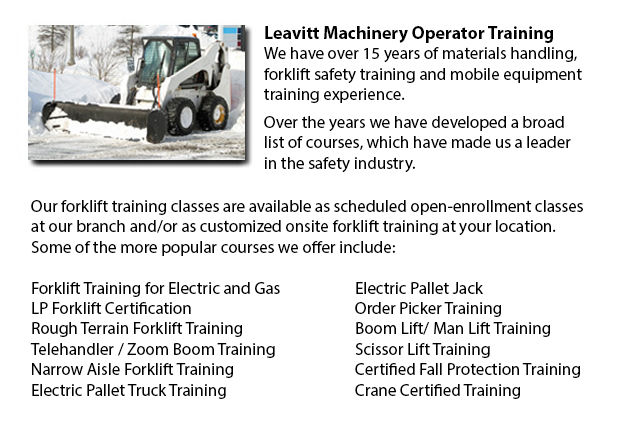
Skid Steer Ticket British Columbia - On a skid-steer loader, the lift arms are alongside the driver with pivot points at the rear of the driver's shoulders. This makes them different as opposed to a traditional front loader. Because of the operator's proximity to moving booms, early skid loaders were not as safe as traditional front loaders, particularly throughout the operator's exit and entry. Modern skid-steer loaders at present have many features to protect the driver including fully-enclosed cabs. Like various front loaders, the skid-steer model can push materials from one site to another, could load material into a truck or trailer and could carry material in its bucket.
Operation
There are various times where the skid-steer loader can be utilized in place of a large excavator on the jobsite for digging holes from the inside. To start, the loader digs a ramp to be used to excavate the material out of the hole. As the excavation deepens, the equipment reshapes the ramp making it steeper and longer. This is a very helpful way for digging below a building where there is not sufficient overhead clearance for the boom of a big excavator. Like for instance, this is a common situation when digging a basement below an existing house or structure.
The skid-steer loader attachments add much flexibility to the machinery. Like for example, conventional buckets on the loaders can be replaced attachments powered by their hydraulics including pallet forks, backhoes, tree spades, sweepers, mowers, snow blades and cement mixers. Various other popular specialized buckets and attachments comprise wood chipper machines, grapples, tillers, stump grinder rippers, wheel saws, snow blades, trenchers, angle booms and dumping hoppers.
History
In the year 1957, the first 3-wheeled, front-end loader was invented in Rothsay, Minnesota by brothers Cyril and Louis Keller. The brothers invented the loader in order to help a farmer mechanize the process of cleaning turkey manure from his barn. This equipment was light and compact and included a rear caster wheel that enabled it to maneuver and turn around within its own length, enabling it to carry out similar work as a traditional front-end loader.
In the year 1958, the Melroe brothers of Melroe Manufacturing Company in Gwinner, N.D. acquired the rights to the Keller loader. They hired the Keller brothers to continue refining their loader invention. The M-200 Melroe was the outcome of this partnership. This particular model was a self-propelled loader that was introduced to the market in the year 1958. The M-200 Melroe featured a a 750 lb capacity, two independent front drive wheels, a rear caster wheel and a 12,9 HP engine. By 1960, they changed the caster wheel along with a rear axle and launched the first 4 wheel skid steer loader which was referred to as the M-400.
The M-400 soon became the Melroe Bobcat. Often the term "Bobcat" is used as a generic term for skid-steer loaders. The M-440 had an 1100 lb rated operating capacity and was powered by a 15.5 HP engine. The company continued the skid-steer development into the mid 1960s and launched the M600 loader.
-
Warehouse Forklift Safety Training British Columbia
Warehouse Forklift Safety Training British Columbia - The corporation would face claims for liability when damage and injuries are sustained in an accident at the workplace. Warehouses can be a hazardous place to work for its workers, making employee... More -
Loader Operator Certification British Columbia
Loader Operator Certification British Columbia - Courses Offered For Getting Loader Operator Certification - Certification for forklifts are required to guarantee the safe operation of forklifts for those employers in industrial, warehouse or constru... More -
Crane / Overhead Crane / Self-Erect Crane / Truck Mounted Crane / Hydraulic Cranes Training in British Columbia
Bridge cranes or likewise called overhead cranes are actually a type of industrial material handling crane making use of a line and hook device that runs on a horizontal beam running along two widely separated rails. Numerous overhead cranes could be... More -
Scissor Lift License British Columbia
Scissor Lift License British Columbia - The operation of scissor lifts carries an inherent chance of danger. Whichever type of powered machine requires correct handling to prevent accidents causing injury or damage. Companies need to make certain tha... More -
Heavy Equipment Training Schools British Columbia
Heavy Equipment Training Schools British Columbia - There are a lot of heavy equipment training schools to select from. If you want to get to the best, it is important to check various aspects of the school in order to ascertain the level of educatio... More -
Telehandler Training British Columbia
Telehandler Training British Columbia - Telescopic handlers usually called telehandlers for short, are an extremely popular piece of heavy construction equipment. They are commonly utilized in the construction and agricultural trades. These machines... More -
Forklift Training Courses British Columbia
Forklift Training Courses British Columbia - When forklift operator safety training is tailored for illiteracy, training time is lessened by 50%. Forklift training certification, lift-truck operator driver safety training evaluation, and train the tr... More -
Heavy Equipment Operator Training British Columbia
Heavy Equipment Operator Training British Columbia - Heavy equipment operator training facilities which provide quality standards in the business, providing field performance work and added machinery training are highly sought after training features... More

Forklift Training British Columbia
TOLL FREE: 1-888-254-6157
forklifttrainingbritishcolumbia.com
Email Us
About Us


